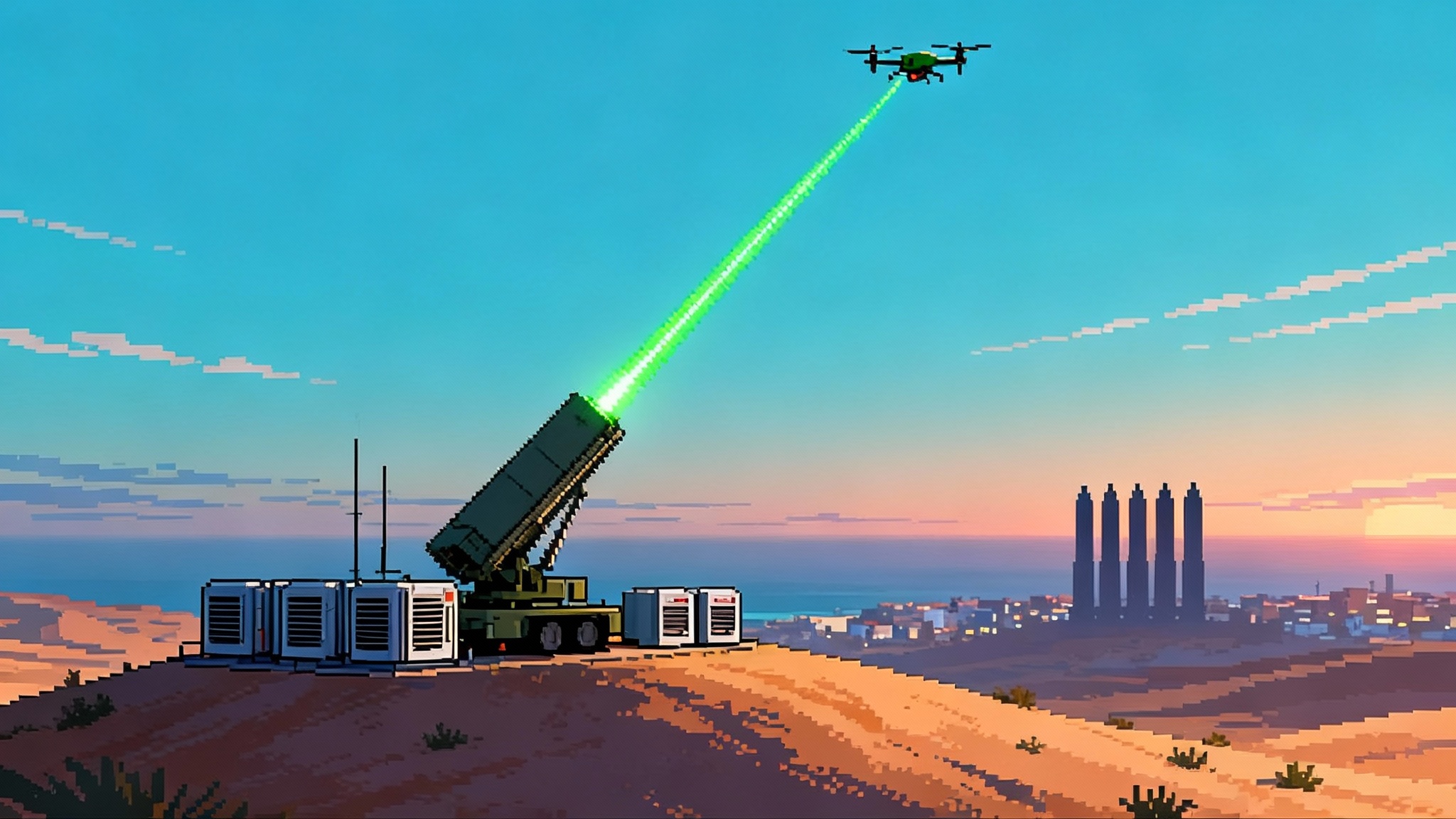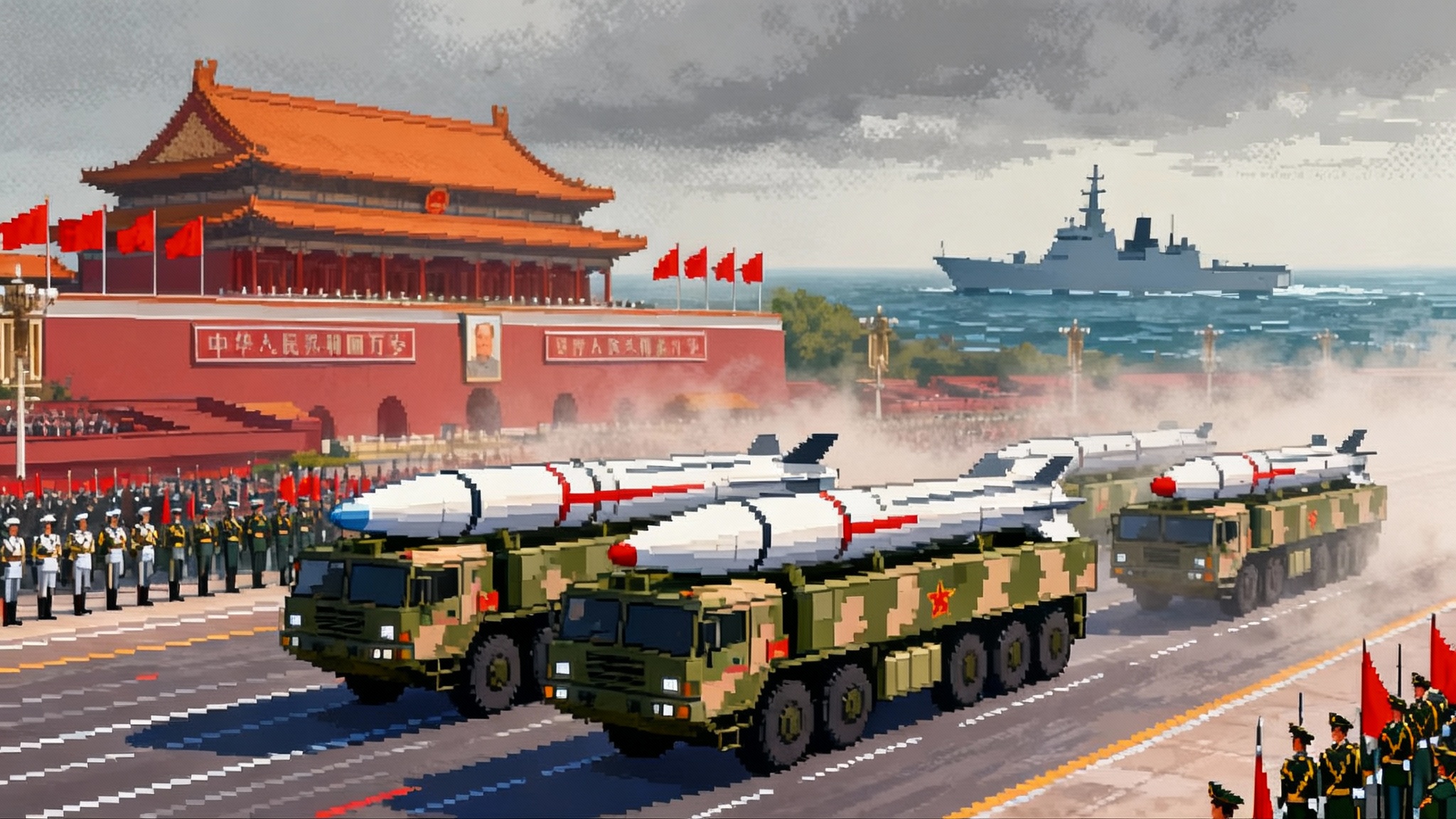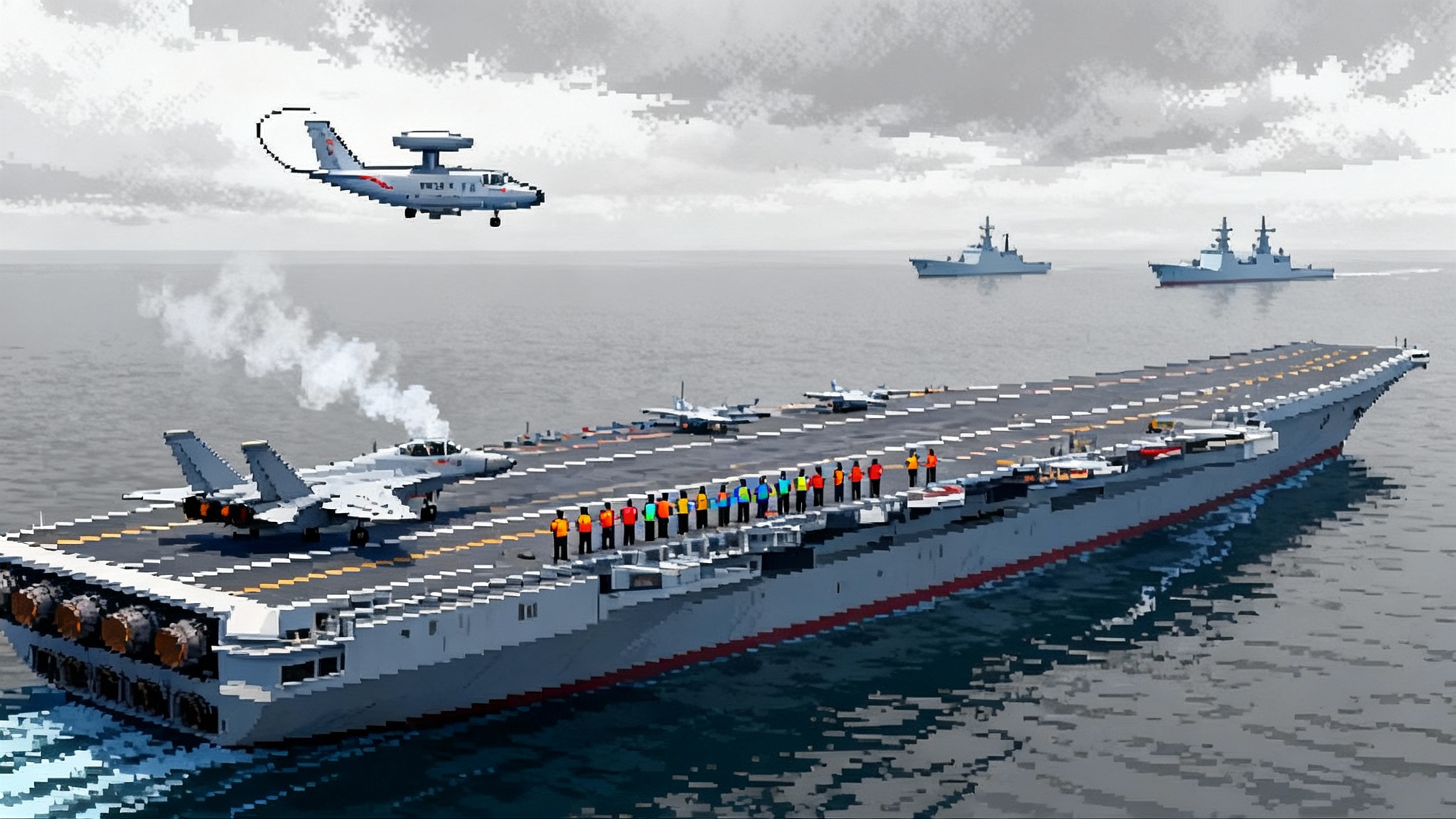Microwaves vs Swarms: Army HPM Debuts in Indo-Pacific, Gen II
Two 2025 milestones shifted the counter-drone calculus. A Balikatan live fire in the Philippines showed Army high‑power microwaves knocking down swarms, and a July Gen II contract points to longer range, higher power and quieter, battery‑heavy endurance.

Two milestones that reframe the counter‑swarm fight
In late April and early May 2025, soldiers from the Army’s 1st Multi‑Domain Task Force brought the service’s Indirect Fire Protection Capability–High‑Power Microwave (IFPC‑HPM) to Naval Station Leovigildo Gantioqui in the Philippines and fired it in a tropical environment for the first time. The event took place during Exercise Balikatan and paired IFPC‑HPM with the Fixed Site–Low, Small Unmanned Aircraft System Integrated Defeat System (FS‑LIDS) to detect, track, identify and then electronically kill small drones. The Army characterized it as the first Indo‑Pacific employment of IFPC‑HPM, emphasizing layered non‑kinetic effects against swarms using shared sensors and command and control. That matters for any Pacific airfield or logistics node expecting massed, inexpensive drones. See the Army’s Balikatan live fire recap for what was proven and what comes next.
The second anchor arrived on July 17, 2025, when the Army’s Rapid Capabilities and Critical Technologies Office awarded a $43.5 million contract for two Generation II IFPC‑HPM systems, plus tests, spares and support. The vendor says Gen II will more than double effective range, raise power by roughly 30 percent and add high‑density batteries for longer, quieter operation with less reliance on external power. Read the July 17 Gen II contract announcement for the upgrade slate and Army test plan.
Why microwaves matter against massed drones
High‑power microwaves attack electronics instead of airframes. Rather than punching holes or detonating a warhead, HPM overwhelms or disrupts control links, processors and power electronics inside the target. A short, precisely shaped pulse can cause control loss or component failure on hobby‑class drones, while tailored waveforms and polarizations can stress more resilient systems. You fight at the speed of light and can create an area effect without fuzing a fragmenting charge near every target. This complements directed‑energy lasers that deliver precise point kills, as explored in our look at how lasers rewrite air defense math.
Two practical benefits follow:
- Deeper magazines: Magazine depth depends on power, thermal limits and duty cycles, not crates of missiles. Keep the generator running or the batteries charged and you keep shooting.
- Lower cost per engagement: An HPM pulse is mostly electricity and maintenance, not a one‑time interceptor. When attackers favor quantity over quality, the economics tilt toward the defender.
Balikatan also highlighted safety. Debris from kinetic kills can litter ramps, fuel points or shelters. Electronic kills reduce that hazard and speed recovery in tight island operating areas and urbanized ports.
From costly interceptors to electronic kills
No one is throwing away interceptors. Kinetic shots remain essential against larger UAS, cruise missiles and crewed threats, and they backstop non‑kinetic effects. But the shot‑for‑shot math is brutal when the attacker uses swarms. Non‑kinetic layers let defenders hold missiles for what only interceptors can do and let microwaves and jammers handle groups one through three. Sensors and C2 build a common air picture, and commanders decide whether to jam, microwave, fire a prox‑fused round or launch a missile. The live fire in the Philippines showed that playbook in action, with IFPC‑HPM and FS‑LIDS working in concert.
Plugging into FS‑LIDS and FAAD C2
FS‑LIDS is a modular fixed‑site architecture that brings together radar, electro‑optics, direction finding and both non‑kinetic and kinetic effectors. It rides on the Army’s Forward Area Air Defense Command and Control (FAAD C2), which stitches sensors to weapons across a base defense zone and beyond. Practically, a radar detects and tracks, FAAD C2 correlates and deconflicts, an EO/IR turret gives positive identification and the system proposes the best effector. That can be an electronic attack waveform, a high‑power microwave pulse or a missile.
Balikatan’s pairing of IFPC‑HPM with FS‑LIDS answered two integration questions: does HPM slot cleanly into the existing C2 and sensor stack, and can crews coordinate non‑kinetic kills while maintaining safety of flight and ROE discipline in crowded airspace. The team used IFPC‑HPM’s EO/IR for local PID while relying on FS‑LIDS for sensing and track custody. This is the template for joint bases where multiple services and coalition partners bring their own sensors and effectors.
Expeditionary realities in the Pacific
The Indo‑Pacific is a string of austere strips, fuel sites and ports that move frequently. That is where small drones show up first. The tropical test answered questions about environmental robustness and hinted at deployment tactics.
- Airfields: Start with passive hardening and observers, add radar and EO/IR, then use electronic attack and HPM as the first shot. Guns and interceptors wait for leakers or larger threats.
- Refuel and ammo points: Crews care about collateral effects and downtime. Electronic kills reduce cleanup and speed recovery.
- Power as magazine: Gen II’s high‑density batteries and reduced external power dependence matter when generators also run pumps, comms and refrigeration. Silent watch stretches coverage windows.
These lessons mesh with broader Indo‑Pacific trends in sensing and command networks, including the emerging LEO transport and warning layer described in LEO mesh for missile warning.
What Gen II changes on the ground
The July 17 contract points to practical changes crews will feel during setup and in the fight. The vendor says Gen II will more than double maximum effective range over the initial systems, raise available power by about 30 percent and introduce longer pulse widths plus a high‑duty burst mode for faster multi‑target engagement. It adds high‑density batteries for prolonged operation and less reliance on external power, plus advanced waveform and polarization options to improve lethality across a broader target set. If Army tests validate the claims, operators gain more standoff, better swarm handling and quieter logistics.
Gen II is also about usability. Soldier touchpoints typically drive faster setup and teardown, clearer user interfaces, better health monitoring for the array and power system, and tighter hooks into FAAD C2 for automated cues and shot recommendations. That shaves minutes off emplacement, reduces operator fatigue during busy air pictures and moves more of the timeline from manual to assisted.
Implications for the Marine Corps and ExDECS
The Marine Corps is experimenting with an expeditionary HPM called ExDECS, a compact, mobile derivative intended to ride with littoral units and support low‑altitude air defense. The payoff is a one‑to‑many effect that fits Expeditionary Advanced Base Operations, conserves interceptors and limits debris near magazines or fuel.
Lessons from Balikatan apply directly: spectrum deconfliction is an operational task; positive identification and ROE discipline still matter; and power is the magazine. Convergence on compatible C2 interfaces and common procedures will smooth joint base defense alongside efforts to harden PNT against jamming, as discussed in our analysis of a NATO PNT rethink amid jamming.
Integration and deconfliction will decide the pace
HPM introduces safety and policy questions for base defense plans. Commanders need clear safe‑to‑emit procedures that account for reflective surfaces, local infrastructure and airspace, plus hard boundaries for beam pointing during routine training. Spectrum managers must validate that HPM employment does not disrupt critical communications, navigation aids or medical equipment. Rehearsal and simple checklists are essential.
Coexistence with other directed energy is another factor. Lasers provide precise aim point kills for single targets; microwaves provide broader, faster coverage against groups of small drones. The two are complementary, but doctrine and software must sequence employment so FAAD C2 does not recommend overlapping shots that interfere with each other. Add guns and missiles and you have a true mix of effects. The key is a C2 stack that sees everything, recommends wisely and explains why.
What to watch next
- Operational test milestones, including integrated live fires in joint air and missile defense events and more tropical or maritime trials. Watch for Army updates that validate Gen II parameters like doubled range and higher duty cycles in soldier hands.
- Transition to a program of record. Early IFPC‑HPM increments inform future requirements, and the Gen II buy with built‑in tests is meant to generate data that shapes that path.
- Industrial capacity. HPM arrays ride on solid‑state power electronics and gallium nitride modules. High‑density batteries and long‑lead components will dictate shipment rates.
- Software and waveform updates. Expect periodic upgrades that add waveforms, tweak polarization schemes and improve automated battle management based on unit feedback.
- Integration with FAAD C2 baselines and interoperability with Marine command and control. Consistent track fusion, engagement recommendations and shot doctrine across services will be a key indicator.
- Marine experimentation with ExDECS. Watch setup time, silent watch, vehicle integration, battery life in hot climates, beam control in cluttered littoral terrain and operator workload.
- Export and policy hurdles. HPM is tightly controlled, and host‑nation spectrum authorities will scrutinize interference risks near civil infrastructure.
The bottom line
Balikatan 2025 and the July Gen II award mark a turning point for counter‑UAS. The Army has taken an HPM system overseas, fired it in the climate where it will likely fight and shown how it plugs into an existing sensor and C2 architecture. The next iteration promises more range, more power and more endurance, which is exactly what expeditionary teams need. Missiles are not obsolete, but defense becomes more affordable and sustainable when the attacker leans on cheap mass. The real test comes next, as crews write checklists, logisticians plan power and services converge on common playbooks so the first thing a swarm sees at a Pacific airfield or fuel pier is a beam that ends the flight before a missile ever leaves a canister.








